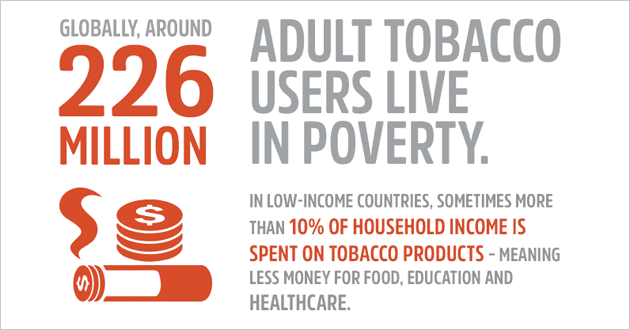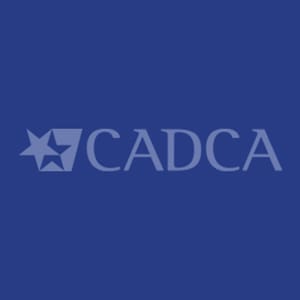The world is always changing. It is vastly different from even 10 years ago when the first iPhone was released, let alone 30 years ago when the World Health Organization (WHO) designated the first ever World No Tobacco Day, or even over 50 years ago when the landmark Surgeon General’s report was published linking tobacco use to cancer. The tobacco landscape has rapidly changed over the past 50 years as well. As public health professionals, it is important we evolve with the ever-changing needs of the populations we serve, so we can be effective change agents in our communities, our states, our county, our world.
Conventional cigarettes remain the most commonly used tobacco product among adults today, though the rates of adult cigarette smoking have decreased significantly from a national perspective, from 42 percent in 1965 to 18 percent in 2012. Even with such a sharp decline, roughly one of every five adults still smoke conventional cigarettes. Disparities continue to exist as well, with states in the south and midwest consistently seeing higher traditional cigarette use than their counterparts in the Northeast and West. Cigarette use does not tell the full story. As reported by the Surgeon General, patterns of tobacco use are changing. There is less use of traditional, combustible cigarettes and an increase in the use of other tobacco products, from smokeless tobacco, to dissolvables, to electronic nicotine delivery system (ENDS) products.
Rates of smokeless tobacco use among adult men had decreased to just above four percent by the year 2000. Since then, smokeless tobacco use has consistently increased to approximately seven percent in 2012. Smokeless tobacco use continues to plague communities in the deep south and rural and frontier communities across the country where it is highly normalized. Dissolvables, a novelty smokeless tobacco product, entered the market alongside more traditional products, such as snuff and chewing tobacco. Dissolvables, were advertised by the tobacco industry as a discreet way to consume tobacco and nicotine that circumvented smoke-free and tobacco-free policies in public places.
ENDS, which are colloquially known as e-cigarettes, have proliferated in the tobacco market, with prevalence rates rising considerably over the past few years. According to research from the Centers for Disease Control and Prevention (CDC), in 2014, overall lifetime use of ENDS by adults ages 18 and above (use of the product for one or more days in a person’s lifetime) was 14.1 percent and past-month use was 4.8 percent. In that same year, current use of e-cigarettes specifically by young adults aged 18 to 24 (13.6 percent) surpassed that of adults 25 years of age and older. Current use among high school students is also steadily increasing, with rates of current use at 16 percent in 2015, exceeding the use of traditional cigarettes among this population in the same year at 9.3 percent. Additionally, use of e-cigarettes among middle school students stands at 5.3 percent in 2015, a rate over twice as high as traditional cigarette use among this population (2.3 percent). E-cigarettes and other ENDS products continue to rise in popularity, and public health interventions are working to address this emerging concern.
Addressing the Changing Landscape
Our proven interventions can be modified to address the new and emerging tobacco landscape. Dr. Brian King of the CDC Office of Smoking and Health, Office of Research Translation, recommends using the tobacco control vaccine. King defines this “vaccine” as a number of proven interventions that address tobacco control. Such tried and true population based interventions include 100 percent smoke-free policies, tobacco price increases or other pricing strategies that drive down use of tobacco products, access to the United States Preventive Taskforce recommended tobacco cessation services, and hard-hitting media campaigns such as the highly successful Tips from Former Smokers campaign.
Additionally, King recommends using data, such as social media and geographic information systems data, and new forms of communication to reach audiences using novel platforms (e.g. Facebook and YouTube). King also reiterated the importance of modernizing other proven interventions such as increasing the minimum legal sale age of tobacco products to 21 (Tobacco 21), developing and enacting comprehensive smoke-free multi-unit housing policies, and supporting health system workflows where healthcare providers can easily electronically refer (e-referrals) tobacco dependent patients to an evidence-based, state-run tobacco quitlines for support with making a successful quit attempt. Lastly, forging new (non)-traditional partnerships to address tobacco use and dependence in innovative ways will prepare public health professionals to continue their evolution in addressing changing population health needs.
The Geographic Health Equity Alliance (GHEA) within CADCA focuses our efforts on addressing tobacco and cancer in geographically disparate communities. We can provide you with training and technical assistance to address these emerging tobacco products.

Tobacco Cessation & Resources
In 1987, the World Health Assembly of WHO passed the first resolution calling for a world no-smoking day in 1988. The purpose of this day was for tobacco users worldwide to avoid using tobacco for a 24-hour period, with hopes that this would help them achieved a sustained quit attempt. In the United States, there are now a greater number of former smokers than there are current smokers, and over 50 percent of people that have ever smoked have been able to quit. This is a major accomplishment, yet there is still room for improvement. On the upcoming World No Tobacco Day, May 31st, encourage tobacco users you know and those in your community to abstain from tobacco use and share cessation resources available in your communities. You can find cessation resources available nationwide here.



